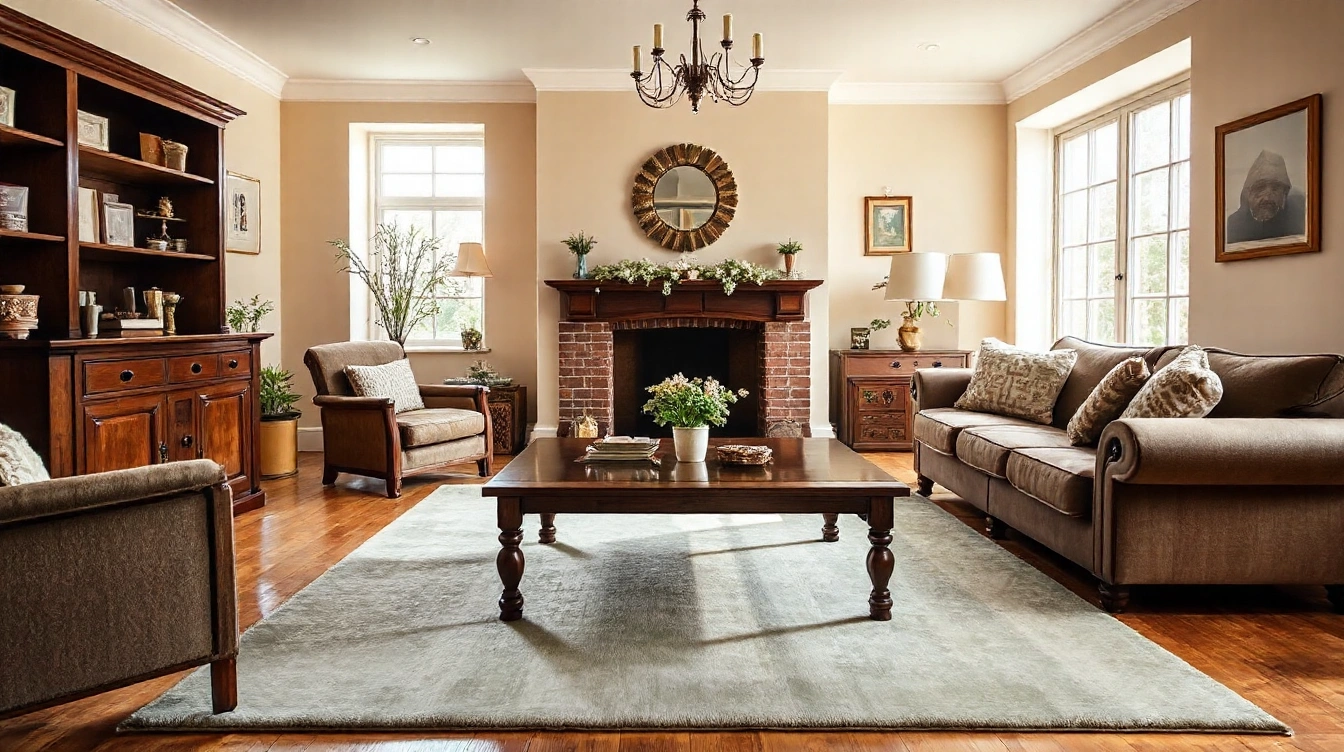Key Principles for Selecting a UK Home Colour Scheme
When choosing a colour scheme in the UK, several practical factors shape your decision. Natural light plays a crucial role: rooms with limited daylight benefit from lighter tones to prevent a gloomy feel, while sun-filled spaces can handle richer, bolder hues without overwhelming. Room size and layout also influence colour choices; smaller rooms generally flourish with pale shades to create a sense of openness, whereas larger spaces can carry deeper, more saturated colours to add warmth.
Understanding colour theory is essential in any successful interior design project. Harmonising colours with existing décor and architectural features—such as wood finishes, fireplaces, or mouldings—creates a cohesive environment. Selecting complementary or analogous colours can balance the aesthetic and prevent visual clashes.
Also read : How can UK residents optimize small spaces for functionality?
Considering the emotional and psychological effects of colours profoundly impacts how you experience your home. Blues and greens evoke calm and relaxation, ideal for bedrooms or lounges, while yellows and reds can energise social spaces like kitchens. Thoughtfulness in matching hues to a room’s purpose ensures a home atmosphere that nurtures well-being and comfort.
By blending these aspects—natural light, space, décor harmony, and colour psychology—you can confidently craft a colour scheme that suits both your UK home’s unique character and your personal taste.
Also to read : What Are the Most Uncommon Household Chores People Dislike?
Popular and Trending UK Colour Palettes
In recent years, UK interior colour trends have embraced a blend of classic charm and contemporary freshness. Trending paint colours UK show a strong inclination toward muted, earthy tones combined with vibrant accents. Colors such as deep greens, navy blues, and warm terracotta are prevailing choices. These hues mirror British heritage by drawing inspiration from natural landscapes and historical architecture, while softly adapting to modern lifestyles.
Regional influences play a significant role in shaping British home colours. Coastal areas tend to favor light, breezy shades like soft blues and sandy beiges, reflecting seaside environments. Meanwhile, urban homes in cities like London often showcase bolder palettes with charcoal greys and jewel-toned highlights that complement sophisticated, minimalist interiors.
Design experts recommend balancing timeless palettes by mixing warm neutrals with richer, statement colours. This approach supports both versatility and personality, making spaces feel inviting without overwhelming. For example, pairing classic cream walls with accent pieces in emerald or burnt orange taps into a refined yet expressive aesthetic.
By understanding how lifestyle, heritage, and regional factors interact, homeowners can select paint colours that not only follow UK interior colour trends but also stand the test of time, enhancing their living spaces with both style and meaning.
Practical Considerations for Colour Choices
Choosing the right lighting and paint colours is crucial, especially when considering the UK’s often variable climate and interior environments. Natural light can dramatically alter how paint colours appear. For instance, north-facing rooms tend to receive cooler, diffused light, which can make colours look more muted or blue-toned. Conversely, south-facing rooms bask in warmer, direct sunlight, intensifying warm hues and making them feel more vibrant.
In the UK’s climate, with its grey cloudy days and short winters, selecting colours that counteract dim lighting can brighten interiors effectively. Warm tones like soft yellows or creamy whites reflect light better, helping rooms feel cosy and inviting during colder months. Alternatively, cooler colours can create a calm, refreshing atmosphere in summer, balancing seasonal shifts.
Room size also guides colour choice. Smaller rooms benefit from lighter shades to visually expand the space, while larger rooms can handle deeper, richer colours without feeling cramped. For open-plan areas, consistent colour schemes with subtle contrasts avoid visual clutter and promote flow across zones.
Understanding how lighting and paint colours interplay with climate and spatial factors is essential. Tailoring these choices enhances comfort, aesthetic appeal, and functionality across the changing UK environment.
Applying Colour Inspiration to Different Rooms
Selecting room-specific colour ideas can transform your home by enhancing the purpose and mood of each space. The living room, often the heart of a UK home, benefits from the best colours for UK living room designs—warm neutrals like beige, soft greys, and muted greens create a welcoming, versatile backdrop. These shades accommodate natural light variations common in UK homes and complement a wide range of furnishings.
In bedrooms, UK bedroom colour schemes lean toward calming tones that promote restfulness. Soft blues, gentle lavenders, and pale greys work well to foster relaxation. These colours encourage restful sleep by reducing overstimulation. For more personality, consider pastel hues or accent walls in deeper shades like navy, which also pair beautifully with natural wood furnishings.
When approaching kitchens and bathrooms, brighter colours or crisp whites can add freshness. Blues and greens continue to excel here due to their invigorating yet soothing effects. Hallways and transitional spaces often require adaptable schemes—think subtle greys or warm taupes that create a cohesive flow between rooms without overwhelming smaller or less naturally lit areas.
By matching room-specific colour ideas with function and lighting, you create a harmonious colour palette that enhances everyday living in UK homes.
Tips from UK Interior Designers
Insights to elevate your home’s colour palette
Understanding expert colour advice UK begins with testing colours in real conditions. Designers recommend applying paint samples on different walls at various times of day, observing how natural and artificial light shifts the shade. This hands-on approach helps avoid surprises when you commit to the full room painting.
One common mistake in professional home styling is selecting colours solely from paint chips or digital images. These sources rarely reflect the true depth and tone once on a wall. Instead, layering colours—starting with lighter base coats and gradually adding accent hues—allows for better harmony and dimension, offering subtle changes that brighten or calm a space as needed.
Creating mood boards is a smart designer colour tip that supports confident decision-making. Collect fabric swatches, paint samples, and photos of rooms you love to visualize how colours and textures interact. This creative process highlights how colours complement furnishings and lighting, reducing costly errors.
By combining sample testing, layering techniques, and mood boards, you confidently curate a balanced, inviting atmosphere. Following these expert colour advice UK strategies ensures your chosen palette enhances your home’s personality with elegance and precision.









